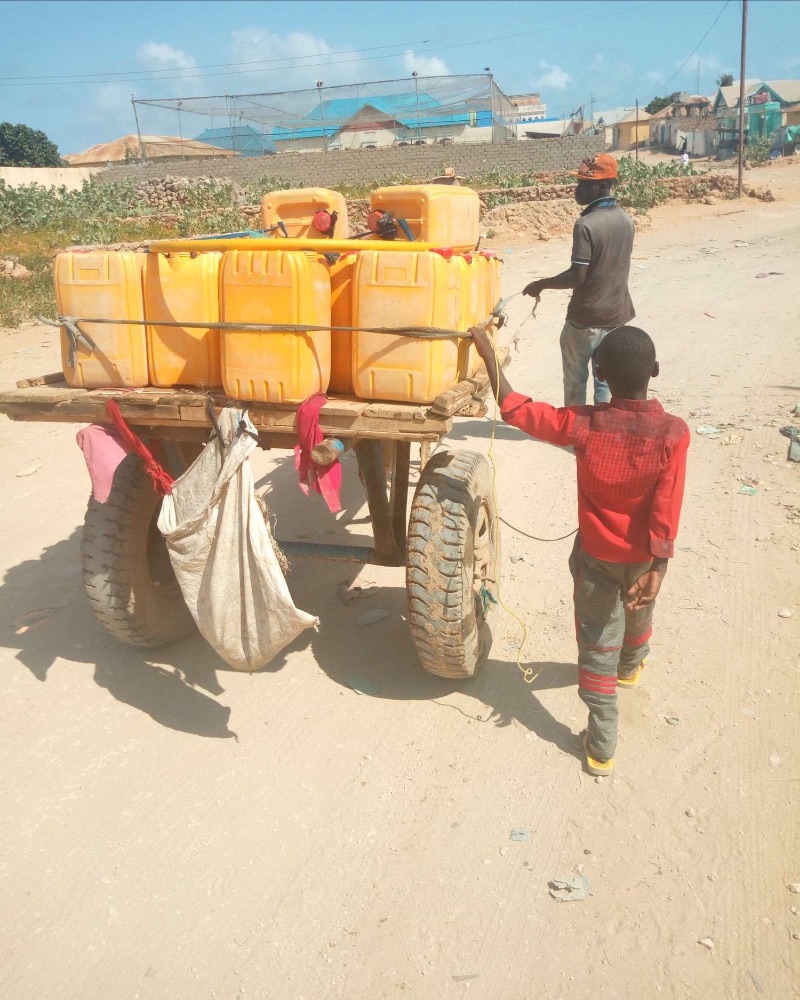Fleeing into the World’s “Worst Humanitarian Crisis,” Somalis Seek Relief in War-torn Yemen
By Haley Cook-Simmons
The humanitarian crisis in Yemen is “the worst in the world,” according to a UN report released in February: an estimated 24 million people, or 80 percent of the population, is in need of assistance and protection from hunger and armed conflict. Yet migration from East Africa to Yemen is increasing. Migration and refugee flows in 2018 reached nearly 150,000 people, 50 percent higher than those recorded the previous year, and higher than the 113,145 migrants who departed North Africa for Europe across the Mediterranean. While only an estimated 5% of migrants entering Yemen plan to stay—with most seeking employment in the Arab Gulf countries—Somalis are a notable exception, who can become eligible to apply for refugee status in Yemen.

Coastline in Yemen’s al-Mahra governorate. Source: Navanti
Why do some Somalis opt to relocate to a country suffering through food shortages and a cholera epidemic, where over 3,337,971 people are internally displaced? The journey itself is dangerous, entailing the possibility of drowning at sea, and unscrupulous smugglers accused of throwing migrants overboard. And the danger to migrants does not abate upon reaching Yemen: those who survive the passage can face extortion from smugglers using electronic payments to demand additional fees from their relatives, and detention and possible abuse by Yemeni authorities.
To better understand the drivers of migration between Somalia and Yemen, Navanti spoke with current residents of southern Somalia about the reasons that factor into their decision to leave or stay. The threat of al-Shabaab violence—which the Somali government appears unable to stem—combined with food insecurity leads them to risk the trip across the Red Sea and Gulf of Aden into a nearby war.
Insurgent violence and famine
Residents of southern Somalia contend with daily fighting between al-Shabaab militants and government forces as the latter remains unable to clear and hold territory. Al-Shabaab still controls around 20% of southern Somalia despite a seven-year joint campaign between Somali and Kenyan forces, later supported by the African Union Mission in Somalia (AMISOM) and the United States. In addition to physical violence, residents deal with the anxiety that their children might be forcibly recruited by the extremist organization.
A sense of hopelessness with the current security environment can be enough to convince an individual to risk a trip to Yemen. As one businessman in Afgoye, Lower Shabelle explained: “I want to save my life and my family. There is no saving them here.”

Donkey cart selling water in Kismayo, Somalia. Source: Navanti
In addition to armed conflict, Somalia suffers from near-famine food insecurity conditions. Persistent drought, which reached an apex in 2015-2017, has resulted in poor countrywide harvests. Drought was followed by record rainfall that caused flooding, displacement, and exacerbated food insecurity in 2018 for already vulnerable individuals. A woman recently displaced from Jilib, Middle Juba said, “the biggest problem in Jilib is drought, famine, and climate change.”
“I would leave to get food, there is none here,” said a farmer living near the banks of the Shabelle River in an area contested by al-Shabaab.
Al-Shabaab’s presence has worsened the impact of climate conditions on food insecurity. Insecurity complicates humanitarian relief efforts by preventing movement of humanitarian supplies, and more directly, the group has banned outside relief organizations from entering areas under its control.
Difficult decisions
However, not everyone facing these extreme challenges of conflict, poverty, and food insecurity leaves home. As a second businessman in Afgoye, Lower Shabelle put it, “I am a Somali citizen. I need to stay in my country until I die.”

Gas station in Baidoa, Somalia. Source: Navanti
Ultimately, the ability of people to build stable and prosperous communities, which would stem the flow of migration, is linked to a resolution to the conflict between the Somali federal government and al-Shabaab. As a woman displaced from her home in Lower Juba due to al-Shabaab violence explained, “we need a peaceful place where jobs are secure and there is no hunger. Let the government do that.”
Currently there is no ceasefire agreement or peace process active between the Somali federal government and al-Shabaab. Migration from Somalia to Yemen will likely increase in 2019, as long as people continue to flee the conflict towards Yemen’s porous borders and under-patrolled coastlines.

